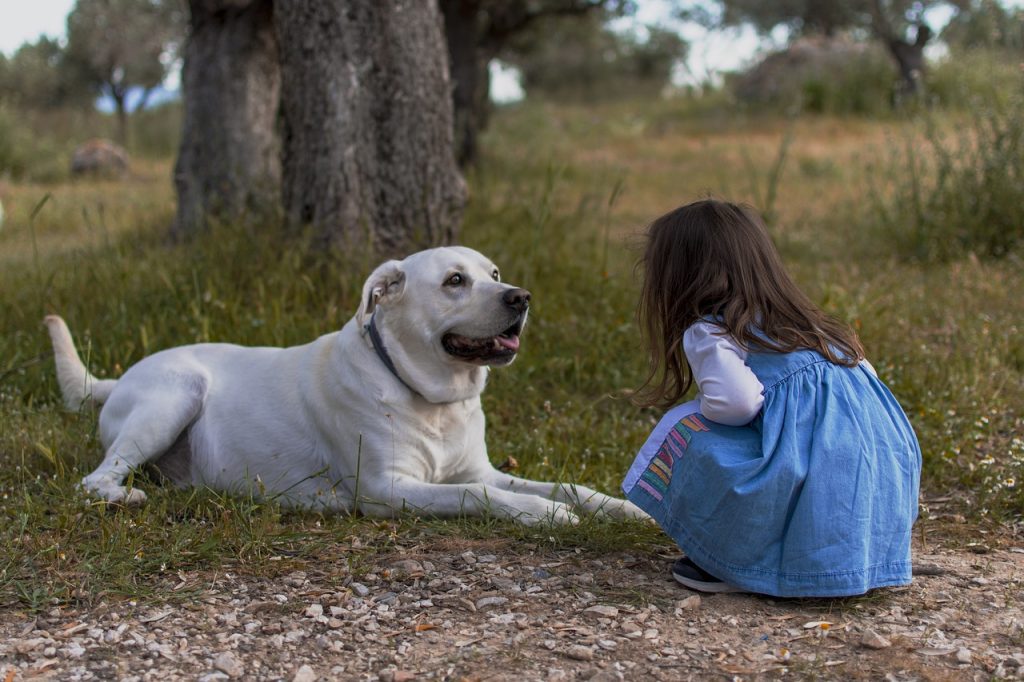Children and Dogs

Image by Stephen Chantzis from Pixabay.
Please see the bottom of this article for the resources I used while researching this subject.
In recent years, there has been an increase in media reports of dog attacks, often involving children. The headline of an article published on the website of the Mirror, from June 2023, gives us an indication of the size of the issue “Dog attacks left 1,700 children in hospital last year as calls grow for action” This does raise concerns about the suitability of dogs as pets in a household with children.
Now, I do not believe that a dog should be discarded or re-homed as soon as there are to be children. Neither do I believe that dogs should be automatically shut away when children visit the home. Dogs and children can co-exist successfully. Below, I look at some advice to ensure that the child and the dog are as safe as possible when they are together.
Education, I believe, is essential when it comes to dogs and children interacting safely. It is not only the child that needs to be educated but any dog owner also. This is an opinion shared by the PDSA. They provide examples of this behaviour to watch out for in dogs on their website:
“Signs a dog is uncomfortable:
• Turning their head away
• Seeing the whites of their eyes
• Being tense
• Having their ears back
• Licking their lips
• Yawning
• Panting
• Pacing around
• Growling or baring their teeth
• Hiding
• Low body posture or cowering.”
They also advise that children should be educated in matters such as recognising a dog’s body language, consent when approaching unfamiliar dogs and how to approach dogs safely.
The RSPCA goes further by looking at how dogs and children communicate. Children tend to be more unpredictable and noisier than adults. Children also often express themselves through physical contact, which may cause the dog to feel threatened or uncomfortable. This feeling may lead to the dog lashing out.
The Blue Cross advocate supervision when it comes to children being with dogs. It does acknowledge that you cannot realistically actively supervise a child and a dog all of the time, and if there is a situation where this is not possible, they should be separated:
“Realistically, you will not be able to actively supervise your dog and the children in your home 100 per cent of the time…Active supervision means you are consciously watching both the child and dog; if you need to pop to the car or prep lunch for a few minutes, it’s best to separate the dog and child while your attention is focussed elsewhere. Bite incidents can happen in seconds, so it’s safest to avoid the risk.
If your dog has access to the same area where a child is present, the number one rule is that you must supervise. If active supervision is not possible, you must separate”
I think children can benefit significantly from having a dog as a pet. Some benefits are; they are great companions, can encourage physical activity and are a good way of teaching children about responsibility. However, it is a decision that must be considered carefully, and all the appropriate actions must be taken to ensure the dog’s and the children’s safety as much as possible.
Resources
https://www.pdsa.org.uk/pet-help-and-advice/looking-after-your-pet/puppies-dogs/children-and-dogs#:~:text=Teaching%20older%20children%20to%20be,signs%20that%20they%20are%20uncomfortable
https://www.rspca.org.uk/adviceandwelfare/pets/dogs/company/children
https://www.bluecross.org.uk/advice/dog/keeping-your-family-dog-and-visiting-children-safe
https://www.purina.co.uk/find-a-pet/articles/getting-a-dog/adoption/benefits-of-dogs-for-children
https://www.mirror.co.uk/news/politics/dog-attacks-left-1700-children-30179014
All opinions expressed in this article are mine and not Kelp Social’s.

Responses